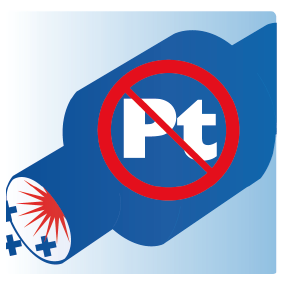
1. Liquid biopsies

Liquid biopsies mark a step forward in the fight against cancer. First, they are an alternative where traditional tissue-based biopsies are not possible. Second, they provide a full spectrum of information compared to tissue samples, which only reflect the information available in the sample. Lastly, by homing in on circulating-tumor DNA (ctDNA), genetic material that routinely finds its way from cancer cells into the bloodstream, disease progression or resistance to treatment can be spotted much faster than otherwise relying on symptoms or imaging.
2. Harvesting clean water from air

The ability to extract clean water from air is not new, however existing techniques require high moisture levels and a lot of electricity. This is changing. A team from MIT and University of California, Berkeley has successfully tested a process using porous crystals that convert the water using no energy at all. Another approach, by a start-up called Zero Mass Water from Arizona is able to produce 2-5 litres of water a day based on an off-grid solar system.
3. Deep learning for visual tasks

Computers are beginning to recognize images better than humans. Thanks to deep learning, an emerging field of artificial intelligence, computer-vision technologies are increasingly being used in applications as diverse as driving autonomous vehicles, medical diagnostics, damage assessment for insurance claims and monitoring of water levels and crop yield.
4. Liquid fuels from sunshine

Can we mimic the humble leaf to create an artificial photosynthesis to generate and store energy? The prospects are looking increasingly positive. The answer lies in using sunlight-activated catalysts to split water molecules into water and hydrogen, and then using the same hydrogen to convert CO2 into hydrocarbons. Such a closed system - wherein CO2 emitted by combustion is then transformed back into fuel instead of the atmosphere - could prove to be revolutionary for the solar and wind industries.
5. The Human Cell Atlas

An international collaboration aimed at deciphering the human body, called the Human Cell Atlas, was launched in October 2016. The project, backed by the Chan Zuckerberg Initiative aims to identify every cell type in every tissue; learn exactly which genes, proteins and other molecules are active in each type and the processes which control that activity; determine where the cells are located exactly; how the cells normally interact with one another, and what happens to the body’s functioning when genetic or other aspects of a cell undergo change, among other things. The end product will be an invaluable tool for improving and personalizing health care.
6. Precision farming

The Fourth Industrial Revolution is providing farmers with a new set of tools to boost crop yield and quality while reducing water and chemical use. Sensors, robots, GPS, mapping tools and data-analytics software are all being used to customize the care that plants need. While the prospect of using drones to capture plant health in real time may be some way off for most of the world’s farmers, low-tech techniques are coming online too. Salah Sukkarieh, of the University of Sydney, for instance, has demonstrated a streamlined, low-cost monitoring system in Indonesia that relies on solar power and cell phones.
7. Affordable catalysts for green vehicles

Progress is being made on a promising zero-emission technology, the hydrogen-fed fuel cell. Progress to date has been stymied by the high price of catalysts which contain platinum. However, much progress has been made reducing reliance on this rare and expensive metal, and the latest developments involve catalysts that include no platinum, or in some cases no metal at all.
8. Genomic vaccines

Vaccines based on genes are superior to more conventional ones in a number of ways. They are faster to manufacture for one thing, which is crucial at times of a violent outbreak. Compared to manufacturing proteins in cell cultures or eggs, producing genetic material should also be simpler and less expensive. A genomics-based approach to vaccines also enables more rapid adaptation in the event of a pathogen mutating, and finally allows scientists to identify people who are resistant to a pathogen, isolate the antibodies that provide that protection, and design a gene sequence that will induce a person’s cells to produce those antibodies.
9. Sustainable design of communities

Applying green construction to multiple buildings at once has the potential to revolutionize the amount of energy and water we consume. Sending locally-generated solar power to a smart microgrid could reduce electricity consumption by half and reduce carbon emissions to zero if a project currently under development at the University of California at Berkeley Goes to plan. Meanwhile, the same project’s plan to re-design water systems so that waste water from toilets and drains is treated and re-used on site, with rainwater diverted to toilets and washers, could cut demand for potable water by 70%.
10. Quantum computing

Quantum computers’ almost limitless potential has only ever been matched by the difficulty and cost of their construction. Which explains why today the small ones that have been built have not yet managed to exceed the power of supercomputers. But progress is being made and in 2016 the technology firm IBM provided the public access to the first quantum computer in the cloud. This has already led to more than 20 academic papers being published using the tool and today more than 50 start-ups and large corporations worldwide are focused on making quantum computing a reality. With such progress behind us, the word on people’s lips now is “Quantum Ready.”